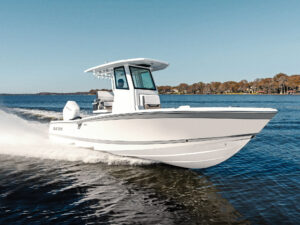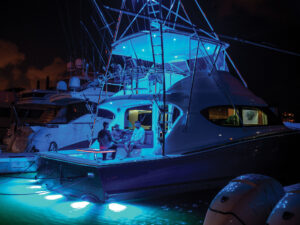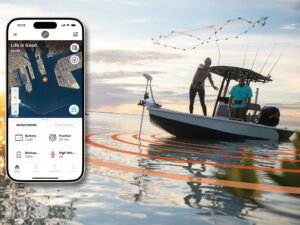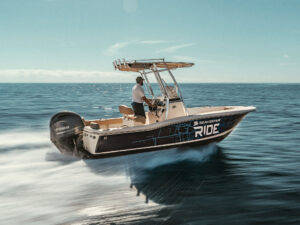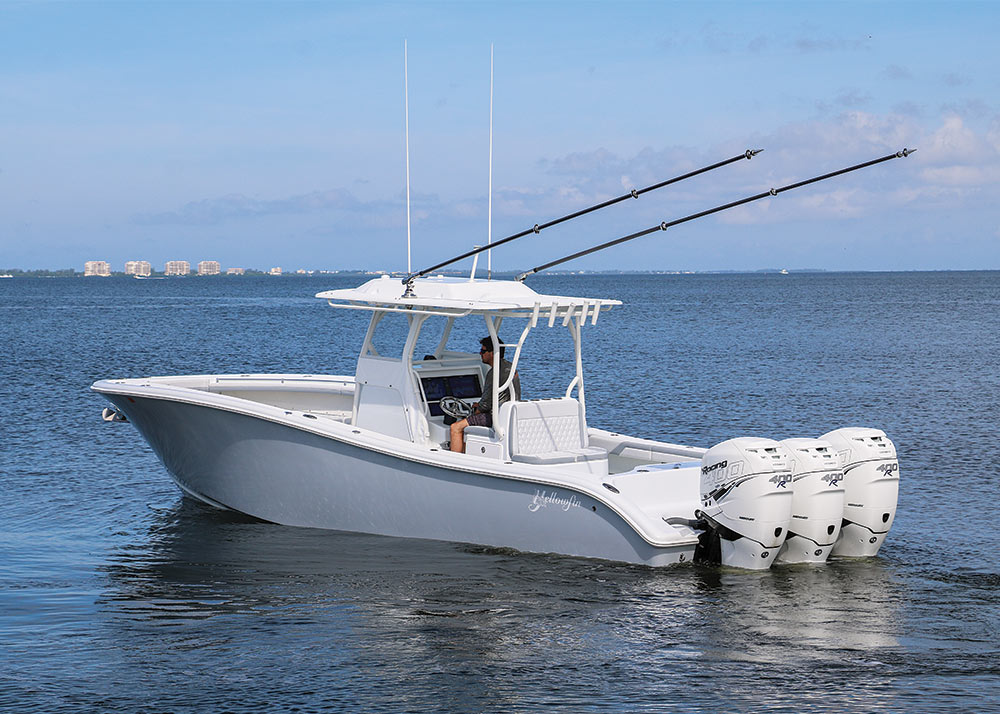
As Nagler tied up the -34-footer to the dock at Sarasota’s Centennial Park, we saw the changes firsthand. Since the layout of the previous Yellowfin 34 was familiar, the refinements were evident. While this model retains its proven twin-step running surface, sweeping sheer and bow flare, the interior has undergone a -redesign to improve fishability.
We put the revamped 34 through its paces in the Gulf of Mexico, using the twin flush-mounted Simrad NSO evo3 19-inch multifunction displays to guide the way. In transit, Nagler explained the changes and rationale behind them.
“The console and helm seating have been shifted about 15 inches forward in this version of the 34,” Nagler says. “That creates a surprising amount of extra room in the cockpit.”
What might sound like a minor change poses issues if not undertaken correctly. When you move one thing, it has a domino effect: Everything else in the deck plan must be adjusted. The builder needs to maintain the proper center of gravity, based on the new design. Changing the layout necessitates new tooling for the deck mold.
Nagler says these adjustments were worthwhile. “It gives anglers extra room,” he says. The aft cockpit now measures 5¼ feet long by 8½ feet wide. Gunwale height is 26 inches in the stern quarters.
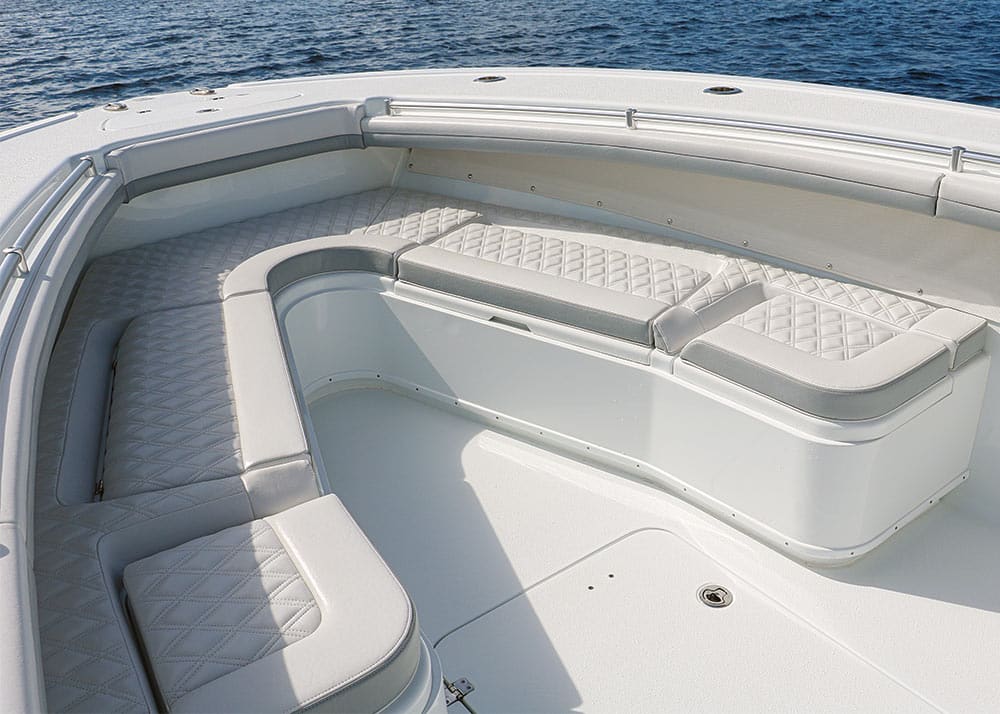
Friends and family members who want extra comfort on those days when fishing is not a priority will appreciate the wraparound bow-seating -option. Motorized backrests convert the -seating to posh loungers. A filler cushion turns the area into a sun pad, with stowage under the seating.
The forward console seat hinges upward to reveal a companionway leading to a step-down compartment inside the center console where you can stash a marine head and other gear.
Removing the forward cushions frees the bow to battle a big fish, throw a cast net or man the anchor line.
Yellowfin promotes the 34 Offshore as a live-bait fisherman’s dream and, indeed, bait capacity abounds, thanks to a 50-gallon livewell in the center transom and a 55-gallon well under the bench seat, behind the helm. Both are pressurized with clear-acrylic covers to seal the tanks and prevent splashing.
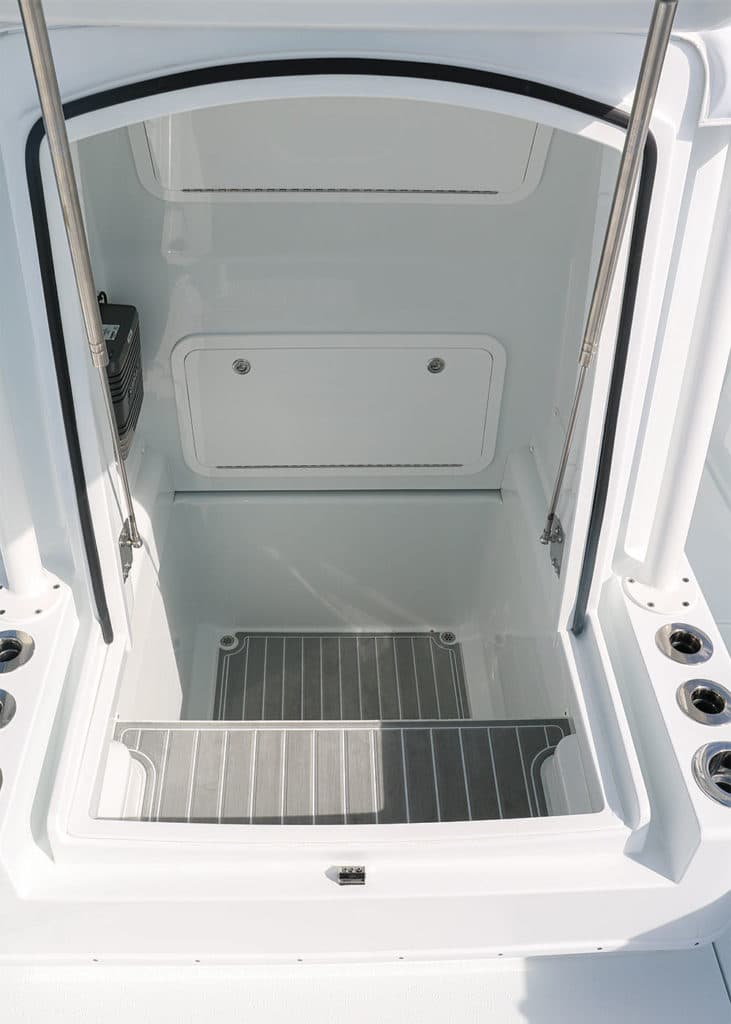
In addition, the 34 sports beaucoup fish-hold capacity, with twin 60-quart insole lockers forward, and an optional coffin box that fits over the 460-quart insole stowage locker in the bow.
The Yellowfin 34 offers remarkable lateral stability, thanks to its 10-foot beam and a greater chine width than similarly sized center–console boats.
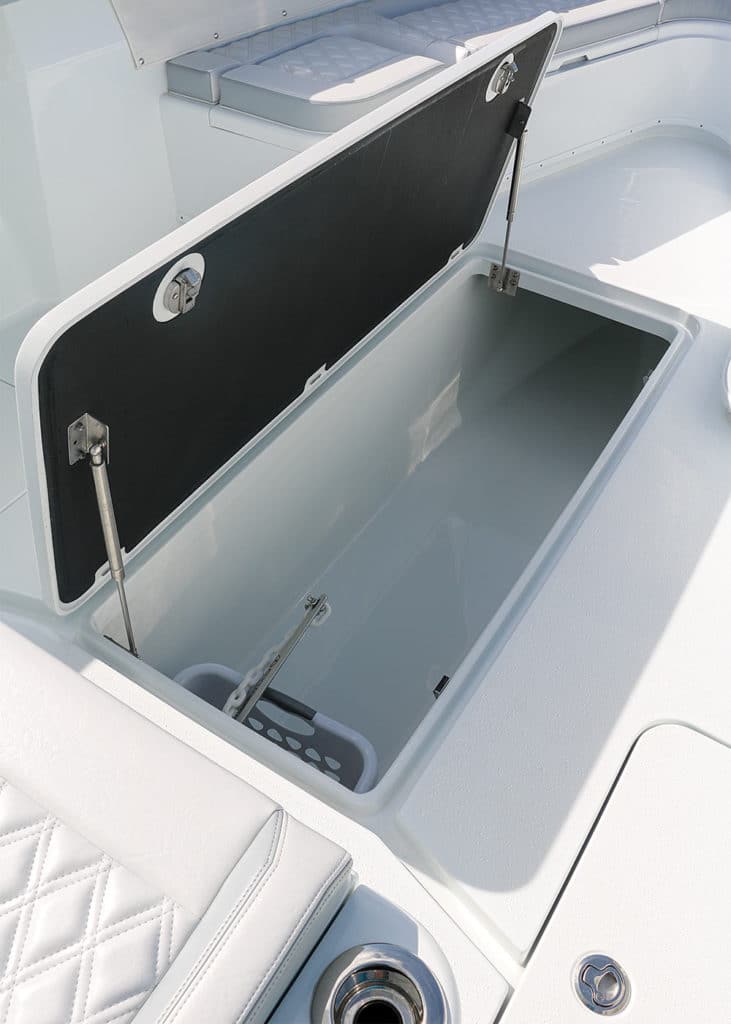
“This creates a more stable platform,” Nagler says. “Even with four adults moving side to side, the boat -refuses to lean with the shifting weight.”
And the hull is -equally stable underway. While you might expect a rougher ride with the chines set so wide, that’s not the case. “If the boat is designed correctly, there is no downside to a wider chine,” Nagler says.
Yellowfins have a reputation for running fast and smooth, and the 34 honored that reputation.
Powered by triple 400R Verados, the hull vaulted to plane with minimal bow rise, and reached 30 mph in 7 seconds.
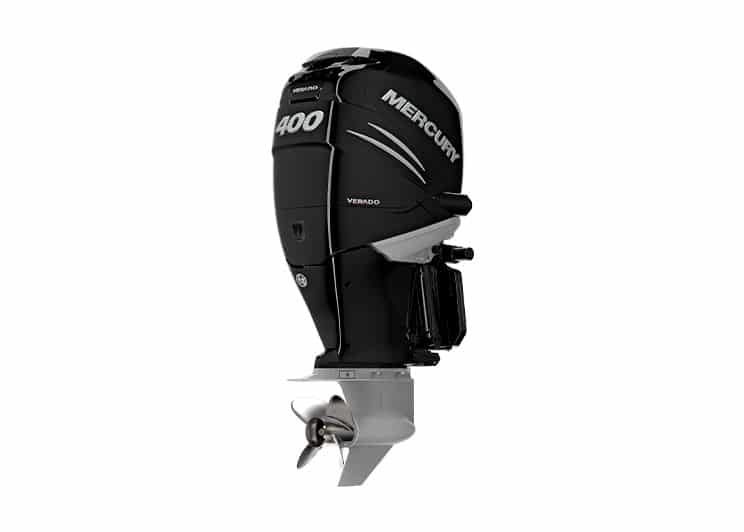
With all three outboards spinning 20½-inch-pitch Mercury Enertia Eco XB three-blade stainless-steel propellers, the Verados pushed the Yellowfin to an eye-watering 72.2 mph at 6,800 rpm, burning 115 gph for 0.63 mpg.
Throttling back, this rig achieved optimum fuel efficiency at 3,000 rpm and 29 mph. Then the Verados burned 17 gph, which translates into a pleasing 1.7 mpg and a range of more than 700 miles based on the 419-gallon fuel capacity. Credit the twin steps for helping reduce drag and boost fuel economy.
The 34 also rode smoothly at speed, skimming over the top of the 2- to 3-foot seas in the Gulf, with the sharp entry knifing through the waves.
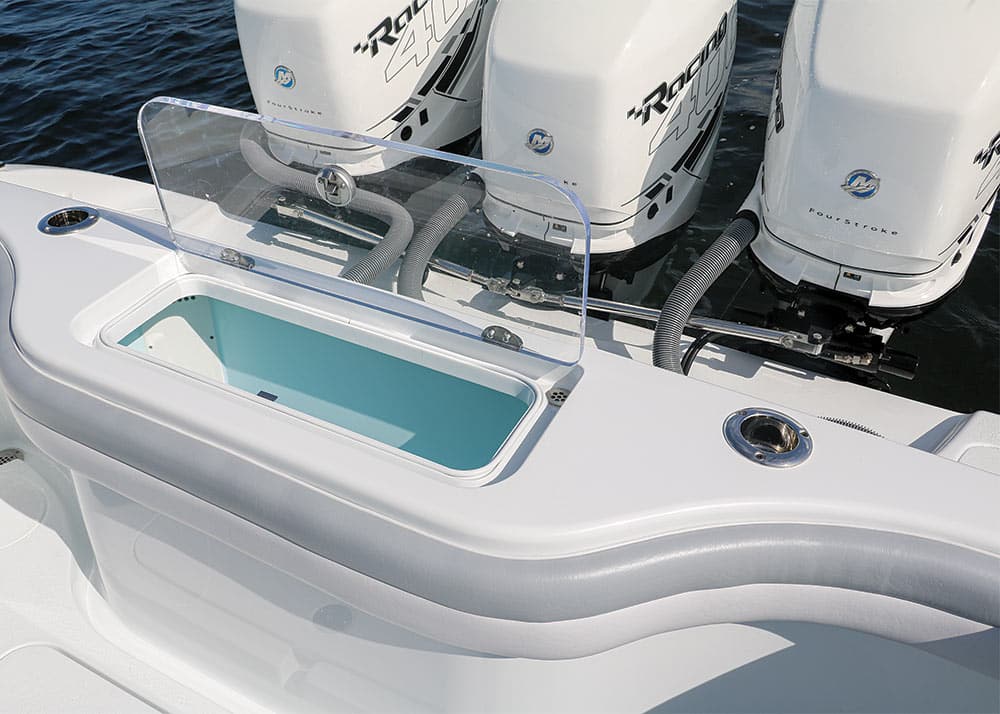
The hull also -cornered with precision and predictability at speed and in all directions. Handling was super–smooth and easy, thanks to Mercury’s standard power steering that allows turning with only slight fingertip pressure on the wheel.
The Yellowfin 34 Offshore was already a winner before the recent redesign. But with the reconfigured interior, which added more aft-cockpit room, it ascends to a new level in both fishability and -desirability.
Specs
Length: 38′8″
Beam: 10′
Draft: 21″
Deadrise: 22 degrees
Fuel: 419 gal.
Weight: 8,800 lb.
Max HP: 1,250
Price: $311,103 w/ triple Mercury 400R Verados and trailer
Yellowfin: yellowfin.com
Test Conditions
Weather: Sunny
Location: Sarasota, Florida
Wind: West 10 to 15 mph
Sea State: 2- to 3-foot chop
Test Load: Two adults, 160 gallons of fuel

